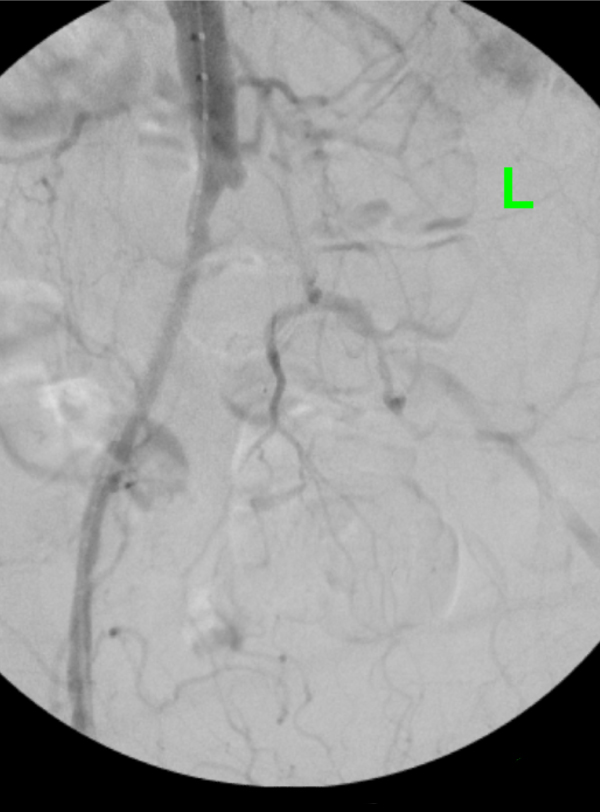Bilateral Internal Iliac Artery Occlusion presenting as Fournier Gangrene
Ahmad Hussain, M.D., Martin Tuma, M.D..
Wayne State University, Detroit, MI, USA.
OBJECTIVES: The internal iliac arteries are critical for providing blood flow to the pelvis. Although occlusion of one internal iliac artery may be well tolerated due to collateralization from the opposite side, acute occlusion of both internal iliac arteries will cause significant ischemia to the pelvis, including the perineum and genitalia. An often encountered perineal disease process seen in diabetic males is Fournier gangrene, in which a polymicrobial infection causes a necrotizing fasciitis of the perineum. We present the unique case of a patient who presented with Fournier gangrene not responsive to traditional therapy and was found to have acute bilateral internal iliac artery occlusion.
METHODS: A 61-year old male with a history of diabetes, urethral stricture status post urethroplasty, and peripheral arterial disease status post lower extremity percutaneous intervention at an outside institution presented to the hospital with foul smelling drainage and crepitus from the perineum and was taken to the operating room for emergent debridement. His gangrene continued to spread, eventually requiring total penectomy. He remained on bedrest and when he began to complain of left lower extremity motor and sensory deficits a week after presentation, vascular surgery was contacted and angiography demonstrated left common iliac artery occlusion with a previously placed right common iliac stent covering the right internal iliac artery origin.
RESULTS: The patient required emergent iliac thrombectomy and thrombolysis of the left lower extremity. Despite aggressive attempts to salvage his left leg, he eventually required an above the knee amputation due to prolonged ischemia.
CONCLUSIONS: Acute bilateral internal iliac artery occlusion is not well tolerated. In a patient presenting with complicated perineal gangrene not responsive to traditional debridement and antibiotic therapy, a high index of suspicion for underlying vascular disease should be maintained, as prompt diagnosis may prevent further morbidity from significant peripheral ischemia. 
Back to 2017 ePosters




